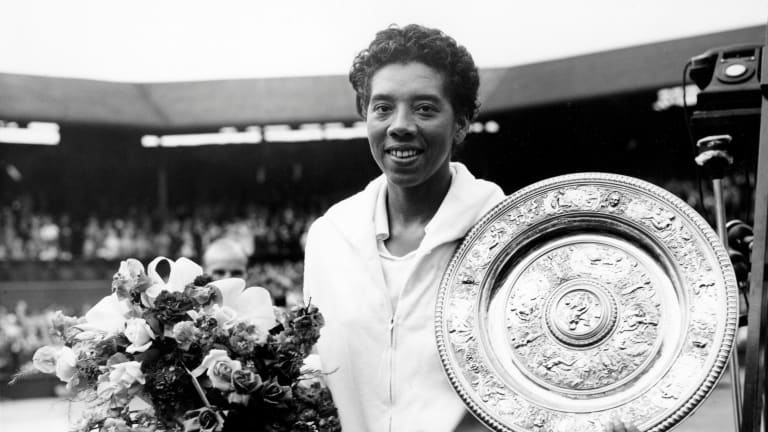Black History Month
"I Always Wanted To Be Somebody": Althea Gibson’s reissued autobiography remains a seminal and significant text
By Feb 17, 2022Black History Month
‘The Cookout,’ honoring Black history in tennis, starts in Southern California, with an eye on impactful growth
By Feb 27, 2025Black History Month
Revisiting Arthur Ashe's famous 1975 Wimbledon win, 50 years later
By Feb 19, 2025Black History Month
We can’t tell athletes to “stick to sports” when gun violence crashes their own party
By Feb 16, 2024Black History Month
Coco's milestone teenage moments: Gauff, 19, wins her first Grand Slam title at the US Open
By Feb 16, 2024Black History Month
"End gun violence," Coco Gauff implored two years ago in Paris—a message that resonates in sports again today
By Feb 15, 2024Black History Month
Coco Gauff's milestone teenage moments: a powerful speech protesting police brutality
By Feb 14, 2024Black History Month
Coco Gauff's milestone teenage moments: the 15-year-old beats Venus during stunning Wimbledon run
By Feb 13, 2024Black History Month
Coco Gauff's milestone teenage moments: the 8th grader saves 9 match points in US Open junior final
By Feb 12, 2024Black History Month
Ben Shelton, Arthur Fils added to HOF's 'Breaking Boundaries' digital exhibit
By Feb 10, 2024Black History Month
"I Always Wanted To Be Somebody": Althea Gibson’s reissued autobiography remains a seminal and significant text
A trailblazer for African-Americans in tennis, Gibson, whose book was first published in 1960, inspired greats from Billie Jean King to Serena Williams.
Published Feb 17, 2022
Advertising
Advertising
Advertising

Gibson won eleven majors—five singles, five doubles, one mixed—and was inducted into the International Tennis Hall of Fame in 1971.
© INTERNATIONAL NEWS PHOTOS/AFP vi